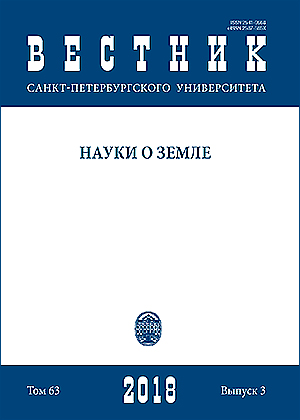Isotopic and geochemical characteristics of Cambrian phosphorites of Karatau Basin (Southern Kazakhstan)
DOI:
https://doi.org/10.21638/spbu07.2018.302Abstract
The article is devoted to studying of isotope-geochemical characteristics of phosphorite and the enclosing carbonate Karatau Phosphorus deposit. As a result of the work on the identification of the least altered rocks, the primary isotopic composition of Sr, C and O in the water of the Karatau basin was established, as well as the isotopic composition of Nd phosphorites. Kyrshabakty Formation underlying phosphorite characterized 87Sr/86Sr ratio 0.70839, δ13C value ranges from +0.2 to 0.6 ‰. The primary Sr isotopic composition of the phosphate-bearing Chulaktau Formation, varies from 0.70877 to 0.70905, and the carbon isotope composition ranges from –3.1 to 0.8 ‰. Based on these data, the sedimentation interval of these rocks was established. Phosphate accumulation within the Karatau basin occurred in the range of 520–509 million years ago as a result of biogenic precipitation of the phosphorus of ocean water on the shelf of the passive margin of the continent.
Keywords:
chemostratigraphy, strontium, neodymium, reconstruction of sedimentary basin
Downloads
References
References
Downloads
Published
How to Cite
Issue
Section
License
Articles of "Vestnik of Saint Petersburg University. Earth Sciences" are open access distributed under the terms of the License Agreement with Saint Petersburg State University, which permits to the authors unrestricted distribution and self-archiving free of charge.






